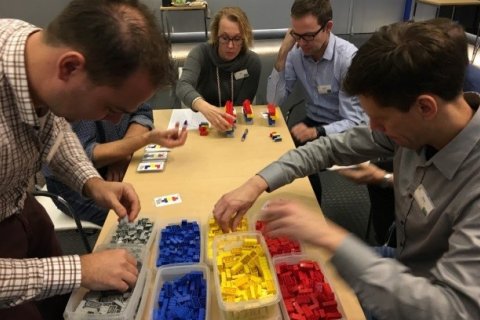Practise lean skills with Lego

You probably did it yourself as a child or perhaps your own children still do now: building with Lego. During the ITS Day in the Jaarbeurs on Monday 14 November 2016, the famous coloured bricks kept the entire Department of Information and Technology Services (ITS) busy. They weren’t building just anything; they were playing a logistics simulation game to experience and experiment with what it takes to make a process more efficient. A practical lesson in Lean thinking.
Before we began, the LeanENT trainers supervising the day claimed that we could do much more, with much less effort. Up to 80% more! The simulation revolved around on the improvement process. This was illustrated by simulating a factory production process in which every worker was a vital link in ensuring that the ordered products were delivered to the customer as quickly as possible, while paying due attention to maintaining quality and reducing wastage.
Less waste
After each production round, the facts were collected and the distance in the process was visualised by joining the stops with a ribbon. The group then put their heads together to consider where in the process it could be made even better and faster, while producing less waste. At the outset, that 80% improvement seemed unfeasible but most of the groups managed it in the end.
This ITS Day fits within the ‘Working towards improved management and cooperation’ project currently being run at ITS. One of the sub-projects involves setting up a method to cooperate better and more effectively and ITS chose Lean. This creates scope for new IT services and innovation projects. Practically everyone has since followed the Lean Foundation and many teams have already introduced visual management boards and performance dialogue.
Continuous improvement
The next step is continuous improvement, which began on the ITS Day. ‘Something that emerged clearly during the simulation was that everyone has ideas about how to improve processes. That is a strength we should use’, says René den Houting, ITS Deputy Director.

